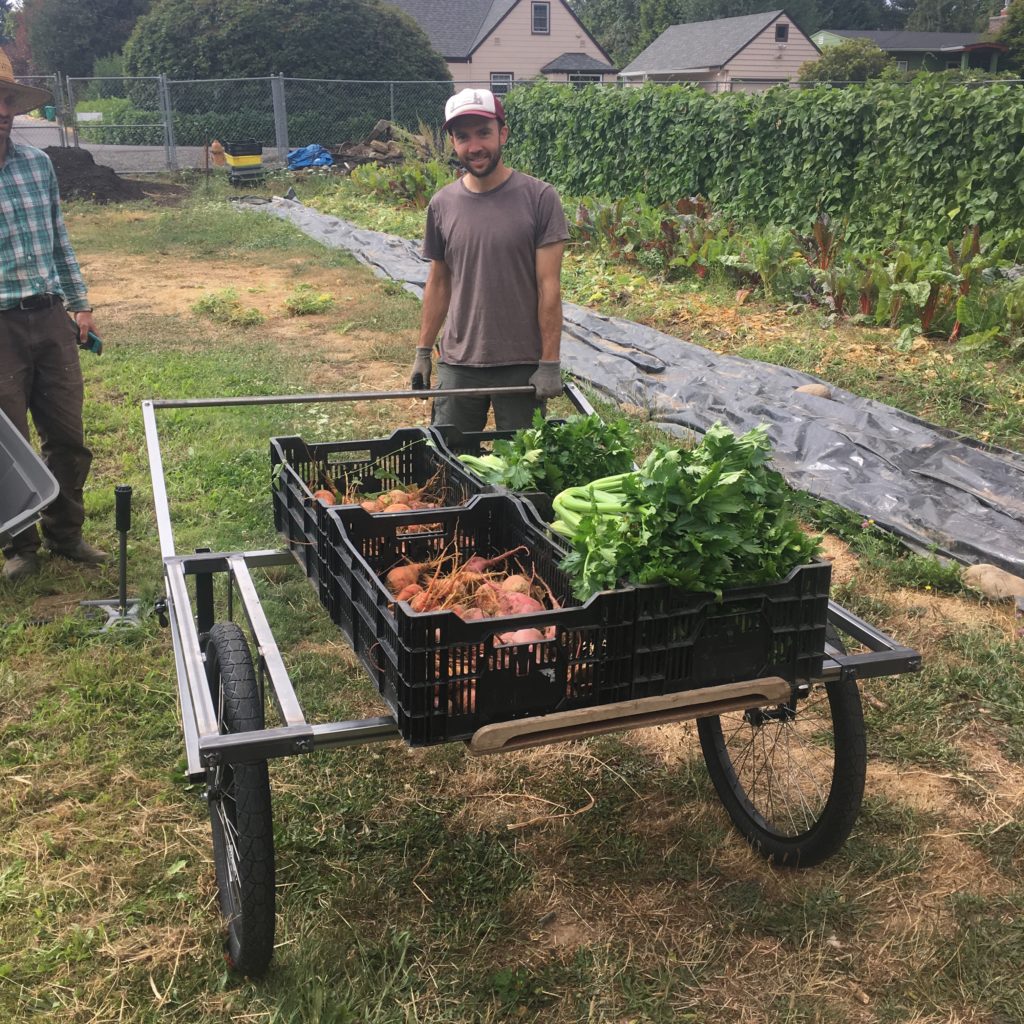The Farm Hand Carts website was hacked last summer and somehow I still haven’t managed to revive it. In the meantime I keep getting requests for the plans for how to build your own that I used to have there and it’s a shame that they’re not still up so I figured I’d post a quick version here until I can get around to restoring all of the information from the old site.

The basic drawing, with dimensions, for the cart pictured above is linked to here. You can change any of the dimensions to match your farm – the two I suggest considering changing are the handle height and the space between the wheels (width of the cart). I set the handle height by measuring the distance to the ground from the tips of my fingers when I’m standing straight up. I want the handle just a few inches below that so I don’t have to bend over much to pick up the handle. For the width of the cart I set the distance between the centers of the wheels to match the distance between the centers of my planting beds. I don’t recommend changing the bed height much, but many people do. For hauling, the cart frame is designed to support a 48″ flat bed, measured from the front of the cart to the back. It should overhang the frame evenly on the front and back of the frame to create good balance and support for the plywood.
I make the carts out of 1 1/4 x .065 square tube and 1″ round tube with a similar wall thickness. The fork legs are 1 1/4 x .25 flat stock. It’s overbuilt, but the added stiffness from being overbuilt makes it easier to move and it’s not excessively heavy.

The cart is designed to be used with standard 26″ mountain bike wheels that are commonly available. Yes, the wheels stick up a little over the frame but I don’t find that they get in my way and the bed of the cart sits just right for easy loading, but still having plenty of clearance. I double and triple stack bins on this cart and have no trouble moving it unless it’s over loaded (more than 300-400 pounds).
The weakest link on the cart is the wheels. They tend to buckle under very heavy load when the cart is going around a turn. Don’t overload the cart and they’ll be fine. If you do overload the cart, make sure the wheels are rolling in a straight line and aren’t getting much side loading (from going over big bumps, or going around turns quickly). If they do break, they’re easier and less expensive to replace than the cart frame itself.
This is a pretty simple welding project for learning on. There’s not a lot of cutting either. Have fun with it and I always love seeing photos of carts in action out there so if you build one please let me know and send me a photo. Thanks!



